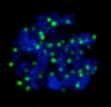G3:Genes|Genomes|Genetics in revision (bioRxiv)G3:Genes|Genomes|Genetics in revision (bioRxiv)
eLife, 2023 Oct 5:12:e84538.
MicroPublication Biology, 2023
PLOS Genetics, 2022 Nov 7;18(11):e1010282.
Current Biology, 2021 Apr 12;31(7):1508- 1514.e5.
Genetics 2021 Jan 23;217(3):iyab010.
(featured article in March 2021 issue of Genetics)
G3:Genes|Genomes|Genetics, 2021 Oct 19; 11(11):jkab310.
Current Biology 2020 Dec 21;30(24):5007-5017.e4.
(featured in a Dispatch/Perspective article by N. Bhalla in Current Biology)
Genetics, 2019 Oct;213(2):395-409.
(highlighted by Genetics editorial board in the published issue)
Mara Schvarzstein, Divya Pattabiraman, Diana E. Libuda, Ajit Ramadugu, Angela Tam, Enrique Martinez-Perez, Baptiste Roelens, Karl Zawadzki, Rayka Yokoo, Simona Rosu, Kentaro Nabeshima, and Anne M. Villeneuve. DNA helicase HIM-6/BLM promotes MutSγ-dependent crossovers and antagonizes MutSγ-independent interhomolog associations during C. elegans meiosis.
Genetics, 2014 Sep;198(1):193-207
Science, 2011 Dec 2;334(6060):1286-9.
(recommended in Faculty of 1000 by Morris Maduro)
Nature, 2006 Oct 26;443(7114):1003-7.
(recommended in Faculty of 1000 by Linda Breeden)
Department of Biology | Institute of Molecular Biology
For questions about the website please click here
Website last updated September 2024 by Dylan Legg




